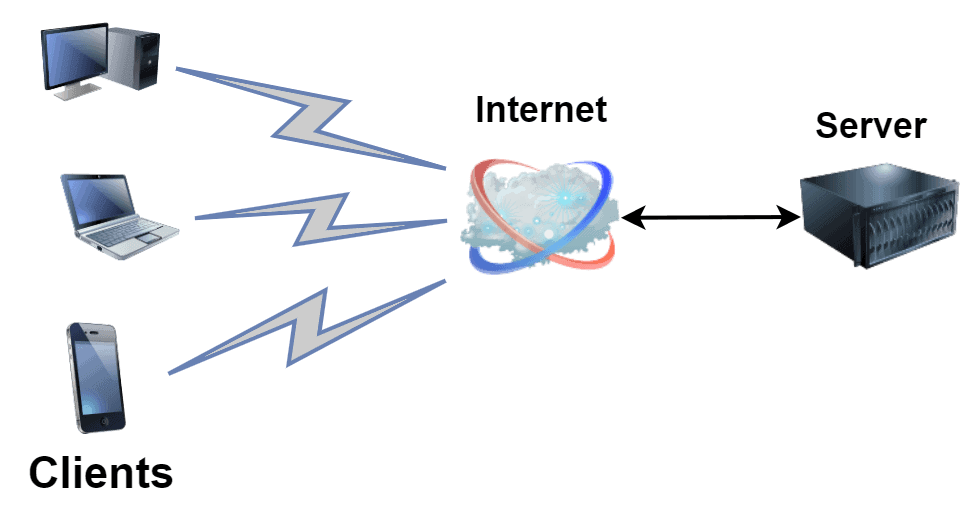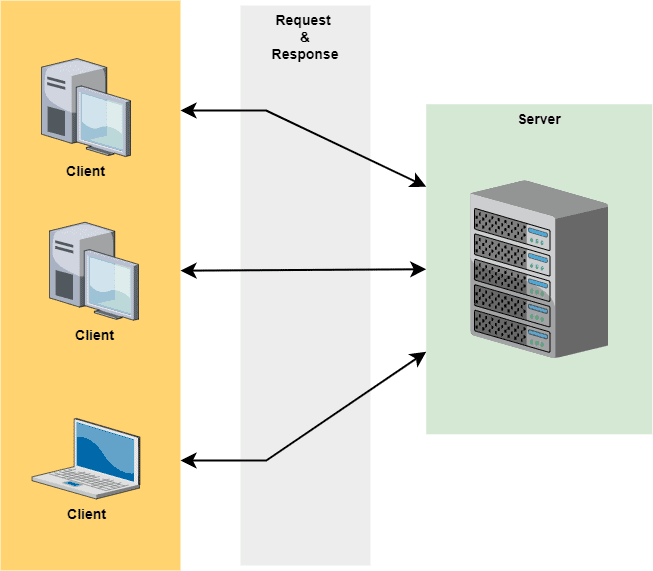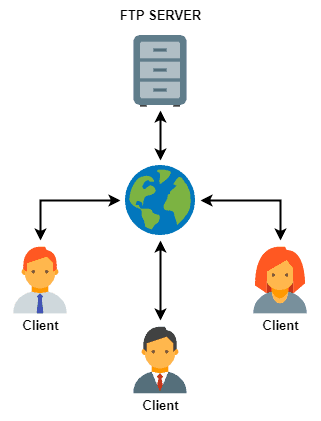1. 概述
本文将深入探讨网络通信中的两种协议类型:无状态协议(Stateless Protocol)和有状态协议(Stateful Protocol),并结合实际案例进行说明。
最后我们会总结两者之间的核心差异,帮助你在实际开发中做出更合适的技术选型。
2. 网络协议简介
在计算机网络中,我们可以使用 OSI 七层模型来描述两台设备之间的通信过程。每一层都使用特定的网络协议来协助发送方将数据传输给接收方:

网络协议可以理解为一组用于指导设备间数据传输的规则。它主要应用于三个领域:通信、安全和网络管理。其核心作用是让结构不同的设备能够高效地进行互操作。
网络协议将整个通信过程拆分为多个小任务,每层负责完成其中一部分功能,从而保证整个协议体系顺畅运行。
在网络数据传输过程中,有些协议不会保存任何关于通信状态的信息,而有些则会记录通信双方的所有交互。这种状态记录能力在连接中断时尤其重要,可以帮助快速恢复通信。
根据是否保存通信状态,我们可以将网络协议划分为两大类:
- 无状态协议(Stateless Protocol)
- 有状态协议(Stateful Protocol)
这两类协议各有优劣,具体选择应根据实际业务需求来决定。
3. 无状态协议
无状态协议是一种通信方式,它不依赖于之前的通信记录。换句话说,这类协议在传输数据时不保存任何上下文信息。
这是无状态协议与有状态协议之间的根本区别。
在无状态协议中,如果两个设备之间的连接中断,重新连接后可以继续传输数据,而无需依赖之前的通信状态。因此,无状态协议非常适合短时、断续的通信场景。
需要注意的是,"无状态" 并不意味着完全没有状态,而是指状态信息被保存在别处。例如,一个无状态应用通常会将状态信息存储在客户端或外部服务中,而不是服务器本地。
常见应用场景
- 路由协议:如 RIP、OSPF,它们通常使用无状态机制来减少状态维护的开销。
- NAT(网络地址转换):一个公网 IP 映射多个内网 IP,使用无状态协议可以简化实现并提升可扩展性。
- 防火墙策略:由于不保存连接状态,处理速度更快,适合高吞吐量场景。
示例协议
HTTP:HTTP 是典型的无状态协议。客户端和服务器只在当前请求期间进行通信,服务器不会保留之前请求的数据。

UDP(用户数据报协议):提供低延迟、容忍丢包的通信方式,常用于实时音视频传输。
4. 有状态协议
有状态协议则会记录通信双方的所有交互信息。换句话说,这类协议会记住每个数据包的状态,以便在网络中断时能够快速重传。
这类协议适用于长时间通信的场景,例如:
- 虚拟专用网络(VPN)
- 远程桌面连接
- 在线游戏
有状态协议的优点在于:
- 数据丢失少
- 可靠性高
- 支持断点续传
但缺点也很明显:
- 实现更复杂
- 需要更多计算资源
- 不适合短连接场景(因为每次都要建立大量状态信息)
有状态应用的特点
有状态应用会在服务器端保留客户端会话数据,用于执行新的事务。它通常会结合数据库进行持久化存储,同时也会在服务器本地保留之前的交互状态。
远程会话(Remote Session) 是实现有状态的一种常见方式。客户端与服务器建立会话后,多次调用服务接口,服务器会保留这些状态,直到会话结束。
示例应用
FTP(文件传输协议)服务器:FTP 是典型的有状态协议。客户端登录后,服务器会记住当前用户状态,后续操作无需重复认证。

Telnet:远程终端协议,连接期间保持会话状态。
5. 无状态 vs 有状态协议对比
| 特性 | 有状态协议 | 无状态协议 |
|---|---|---|
| 是否保存状态 | ✅ 是 | ❌ 否 |
| 是否预期响应 | ✅ 是 | ❌ 否 |
| 设计复杂度 | ✅ 复杂 | ❌ 简单 |
| 是否需要服务器保存状态 | ✅ 是 | ❌ 否 |
| 客户端与服务器是否耦合 | ✅ 是 | ❌ 否 |
| 事务处理速度 | ⚠️ 较慢 | ✅ 快 |
| 服务器实现难度 | ⚠️ 难 | ✅ 易 |
| 数据恢复能力 | ⚠️ 服务器崩溃后数据可能丢失 | ✅ 无状态无需恢复 |
| 请求是否依赖服务器状态 | ✅ 是 | ❌ 否 |
| 扩展性 | ⚠️ 困难 | ✅ 容易 |
| 示例协议 | ✅ FTP、Telnet | ✅ HTTP、UDP、DNS |
6. 总结
本文我们深入讲解了网络通信中两种主要的协议类型:
- 无状态协议:适用于短时、独立通信,如 HTTP、UDP
- 有状态协议:适用于长时间连接,如 FTP、Telnet
二者各有优劣,选择时应根据业务需求权衡:
- 如果你追求高性能、易扩展,优先考虑无状态协议
- 如果你需要高可靠性、支持断点续传,则可选择有状态协议
✅ 建议:现代 Web 开发中,无状态协议(如 RESTful API)已成为主流,状态信息通常由客户端或分布式缓存管理。这样可以兼顾性能与灵活性,避免服务器负担过重。